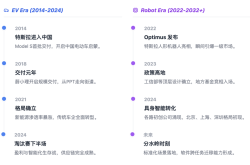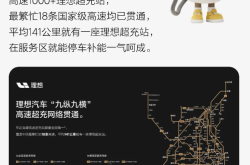Collective Commission Reduction by Online Ride-hailing Platforms: Where Should the Post-Online Ride-hailing Era Head?
![]() 09/08 2025
09/08 2025
![]() 562
562
Over the years, with the rapid development of mobile internet, online ride-hailing has gradually become an indispensable part of our lives. Recently, news of collective commission reductions by online ride-hailing platforms has emerged, prompting the question: Where should this market head in the post-online ride-hailing era?

I. Collective Commission Reduction by Online Ride-hailing Platforms
According to 21st Century Business Herald, this year is widely regarded as the toughest for online ride-hailing drivers and the most eventful for the industry.
From "unpleasant odors in taxis" to "air conditioning only available upon payment," frequent conflicts between drivers and passengers have arisen, partly due to the continuous pressure on driver incomes. Against the backdrop of frequent regulatory interventions, several online ride-hailing platforms, including Didi Chuxing and Gaode Maps, have recently announced commission reduction notices. Among them, Didi, T3, and Gaode have lowered their maximum commission rates to 27%, while Cao Cao has reduced its rate to 22.5%.
Online ride-hailing drivers are paying close attention, but few are thrilled. "I haven't felt any difference. They say they're lowering commissions every year, but I've never noticed a decrease," multiple drivers told a 21st Century Business Herald reporter. A 2% reduction per order would mean an additional monthly income of approximately 100-200 yuan ($14-28) from fares, which is almost negligible compared to the significant decline in orders and income this year.
Specifically, Didi Chuxing and T3 Chuxing have committed to a maximum commission rate of no more than 27% per order. Didi Chuxing stated that in 2024, the average commission for all its orders would be 14%, and for drivers completing more than 50 orders per month, the monthly average commission cap would be guaranteed at 25%. Cao Cao Chuxing has promised to reduce the commission rate cap for orders placed through its APP and mini-program from the original 22.7% to 22.5%.
Gaode Taxi has pledged to push at least 80 partner online ride-hailing platforms to cap their commission rates at no more than 27%. Meanwhile, Gaode's own information service fee cap will be reduced to 9%, resulting in a 2% overall cost reduction.
During August 25-27, a 21st Century Business Herald reporter used Didi Chuxing and found that for orders with coupons, the platform did not take a commission, while regular orders had commissions ranging from 22%-27%. The backend data of the two aforementioned drivers showed that their average monthly commission rates in August were around 19%.

II. Where Should the Post-Online Ride-hailing Era Head?
Recently, several online ride-hailing platforms have collectively announced reductions in commission rates, sparking widespread industry attention and prompting deeper reflection: Where should the industry head in the post-online ride-hailing era?
Firstly, the money-burning expansion model is firmly in the past. In the early stages of online ride-hailing development, the sector primarily relied on capital injections to rapidly seize market share. Back then, venture capital was abundant, and companies attracted users and drivers through substantial subsidies and low-price dumping, leading to a fierce "money-burning war." This strategy indeed helped some leading platforms quickly establish a vast user base and brand recognition.
However, as the market gradually became saturated and regulatory policies tightened, the growth model relying solely on capital accumulation began to show its drawbacks. On one hand, continuous losses strained companies' financial situations. On the other hand, excessive competition led to uneven service quality, affecting user experience. More importantly, when venture capital started to wane, this unsustainable business model inevitably faced transformation pressure. Therefore, seeking new profit models and development paths became an industry consensus.

Secondly, lowering commissions has become an inevitable trend. Currently, the online ride-hailing market has gradually entered a mature phase, with a relatively stable competitive landscape. After multiple rounds of market consolidation, the user bases of leading platforms have generally approached their ceilings, making it difficult to capture incremental users, and shifting the industry from incremental to inventory competition (literally "stock competition," referring to competition for existing users).
At this stage, platforms find it increasingly difficult to achieve growth solely by acquiring new users. Enhancing user experience and retention rates has become crucial.
In this context, drivers, as direct providers of platform services, have become increasingly important. Excessive commission rates reduce driver incomes, affecting their work enthusiasm and service quality, and even causing some drivers to leave the platform or the industry. Lowering commission rates helps enhance the platform's attractiveness and stickiness to drivers, improve driver service quality, and ultimately increase passenger satisfaction, forming a positive service ecosystem.
From a policy perspective, transportation authorities have repeatedly emphasized the need to protect drivers' legitimate rights and interests and reduce excessive commission rates. Since the second half of last year, regulatory authorities in multiple regions have repeatedly met with online ride-hailing platforms regarding commission issues, explicitly requiring reasonable commission rate settings to protect the legitimate rights and interests of both drivers and passengers.
The collective reduction in commission rates by multiple platforms is the result of both market competition and policy guidance. This move reflects, to a certain extent, that the online ride-hailing industry is moving towards a healthier and more sustainable direction. By optimizing the interest distribution between platforms and drivers, it aims to enhance the service quality and competitiveness of the entire industry.

Thirdly, the multi-tiered commissioning under the aggregation model poses a genuine challenge for online ride-hailing. Compared to a mere 1-2 percentage point reduction in commissions, a more severe issue lies in the rising phenomenon of multi-tiered platform commissions with the advent of the "aggregation ride-hailing" model, severely eroding drivers' actual take-home income. Aggregation platforms do not directly own transportation capacity but integrate the capacity resources of multiple online ride-hailing platforms through technical interfaces, providing users with the convenience of "one-click Ride hailing services across the entire network (net-wide ride-hailing)."
However, while enhancing user experience, this model has introduced complex commission distribution chains. After completing an order, drivers may need to pay commissions to both the operating platform and the aggregation platform, or even multiple layers of commissions. This means drivers' actual incomes are divided among multiple "intermediaries," while platforms evade regulation under the guise of "technical service fees" or "information service fees."
Meanwhile, drivers face a "order dilemma": If they do not connect to aggregation platforms, the traffic from a single platform is limited, making it difficult to guarantee order volumes. If they do connect, they face high commission pressures, limiting income growth. This "dilemma" not only exacerbates drivers' survival pressures but also distorts the fair competition environment in the market, enabling aggregation platforms to become new "commission machines" by leveraging their traffic advantages, while drivers and operating platforms that truly provide services become passive recipients.

Fourthly, breaking the intermediary markup model is the true exploration needed for the future. On one hand, platforms need to further optimize their business models and reduce excessive reliance on commissions. They can draw inspiration from innovative models, such as diversifying into food delivery, small parcel transportation, and other businesses to achieve income diversification, providing drivers with more income sources and further reducing the commission pressure on the single online ride-hailing business. Other platforms can also explore similar diversified development paths by expanding into new businesses and tapping into new profit growth points to reduce their reliance on driver commissions.
On the other hand, platforms should improve their order dispatching mechanisms and income structures. They can optimize the order dispatching logic to ensure fair and reasonable order allocation, avoiding excessive income disparities among drivers due to unreasonable order distribution. Additionally, besides lowering commissions, they can incentivize drivers to improve their service levels and increase their incomes by setting multi-dimensional reward mechanisms, such as service quality awards and green travel awards.
It can be said that the collective commission reduction by online ride-hailing platforms marks the industry's official entry into the "post-money-burning era." However, this is merely the beginning of transformation. Facing new challenges brought by the aggregation model, the industry must go beyond simple commission adjustments and deeply consider how to reconstruct the value distribution mechanism. Only by finding a truly low-transaction-cost business model can it break through the current predicament; otherwise, it risks falling into a vicious cycle and failing to truly drive industry development.







